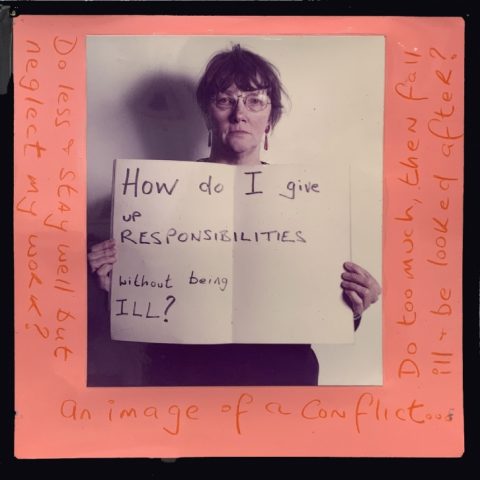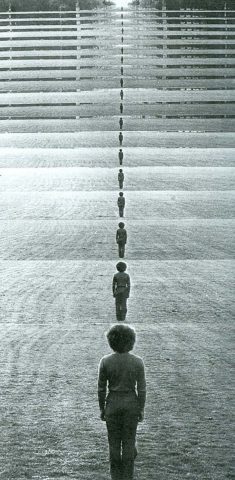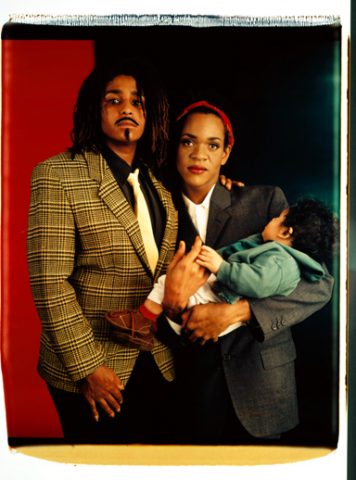Claude Cahun
“Masculine? Feminine? It depends on the situation. Neuter is the only gender that always suits me.”
b. 1914, France. Surrealist performative self portraits.

NYTimes
Set up your free NYTimes Account
Lucas Samaras – Photo Transformations – Polaroid manipulation
Polaroid series produced between 1973 and 1976 with an SX-70 camera.
“Samaras’s “photo-transformations” are the result of chemical manipulations the artist made to Polaroid images as they were developing. He scratches, rubs, and scrapes the delicate surface of the print, introducing an aesthetic of controlled agitation that shifts the register of the picture from purely photographic to something more like drawing, etching, or even painting.”
Jo Spence – Only when I got to fifty did I realize I was Cinderella
B. 15th June 1934, London, D. 24 June 1992, London: British photographer, a writer, cultural worker, and a photo therapist.
“Following a diagnosis with breast cancer much of Spence’s subsequent work was a response to her treatment by the medical establishment and her attempt to navigate its authority through alternative therapies.
In 1984, alongside Rosy Martin, Spence developed ‘Photo-Therapy’, adopting techniques from co-counselling to invert the traditional relationship between the photographer and the subject. If historically the subject had little control over their own representation, Photo-Therapy shifts this dynamic enabling them to act out personal narratives and claim agency for their own biography.”
Bruce Nauman’s Walking in an Exaggerated Manner (1968)
B. December 6, 1941, USA
“If I was an artist and I was in the studio, then whatever I was doing in the studio must be art. At this point art became more of an activity and less of a product.”
William Wegman Family Combinations (1972)
B. December 2, 1943 Massachusetts, USA
“The top row of this tableau of six pictures represents, from right to left, Wegman, his mother, and his father. The bottom row consists of superimpositions of all possible combinations of any two of the three images above. The combinations resemble the sorts of pictures that once circulated as scientific illustrations of racial and social types. The humor of Wegman’s tableau derives from the deadpan sincerity with which he has reenacted this absurd operation.” source
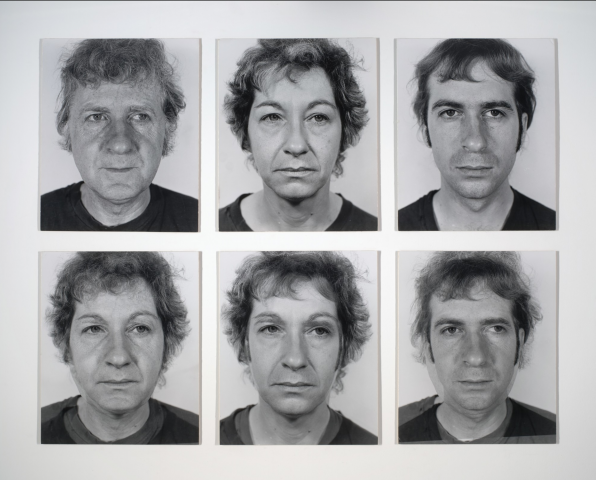
Patty Chang “In Love” (2001)
b. 1972, San Francisco
Nona Faustine
B. 1977, Brooklyn, NYC
““Mitochondria,” which documents and celebrates the lives of three generations of African-American women living under one roof.
Ms. Faustine began the series in 2008, photographing herself and some of the women close to her: her mother, Queen Elizabeth Simmons; her sister, Channon Simmons; and her daughter, Queen Ming. The women’s shared living situation speaks to the strength of their familial bond and their interdependent destinies.” -Maurice Berger
Klaus Rinke Time, Space, Body Transformations
B. 29th April 1939, Germany
“I was born in 1939, in Wattenscheid, Germany. My father was a railway man, my grandfather was a railway man and my great-grandfather was a railway man. I grew up near a railway station with numerous railway tracks and railway clocks. As a child, the railway tracks served as my daily playground; at night the clocks became my moons. Early on I incorporated these clocks into my life. In the evening, when I was young, I was required to be at home at 8:00 PM on the dot or face severe reprimand, so I depended upon these clocks. Each day the ever-present clock faces slowly ticked their way inexorably towards the eminent hour of departure towards home – like time bombs for us in the midst of a real war – as each evening became a race against time. The exactitude of these railway clocks and their power over my freedom encouraged in me at a very young age a sense of discipline and the notion of exactitude. Later in my late 20’s and early 30’s the German railway clock and the notion of time and duration would become a major factor in my artistic expression.”
Laura Aguilar
B. 1959 D. 2018 Los Angeles County, CA
Sandy’s Room 1989-1990
“This self-portrait depicts Aguilar reclining naked on a chair, feet up on an ottoman, in an attitude of what I’m tempted to call extreme, even aggressive, repose—a large-bodied queer Chicana odalisque, hair cut in butch fashion, head laid back, eyes closed, cold drink in hand (with ice visible), a window open onto a riot of plant life, a fan pointed toward her. The picture exquisitely crystallizes the relentless objectification of the brown and the female body in Western representation and the way this freezing into fetish can flip into a sign of immense empowerment, perhaps because it is by/of a body so assertively uninterested in the viewer’s gaze. The fact that we know Aguilar made this picture of herself helps in our appreciation of its function as self-empowering, but so does every detail in this meticulously composed image, from clearly self-confident naked flesh to external vegetation bursting its way into an otherwise plain room—the energy coiled in Aguilar’s relaxed body explodes here.” – Amelia G. Jones for Art Forum
Art Forum
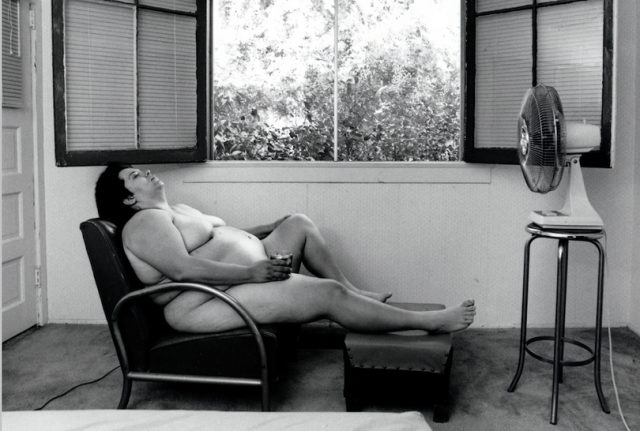
Lyle Ashton Harris – The Child (1994)
B. 1965 Bronx, NYC
Posing with artist Renee Cox this image from the series The Good Life.
“This series of 20 x 24-inch dye-diffusion Polaroids, interspersed with cibachrome prints reproducing a selection of images from his family’s photo archives, comprised Harris’s first solo exhibition in 1994 at Jack Tilton Gallery (New York). Writing in Black Art and Culture in the 20th Century (1997), Richard J. Powell described this work as a “complete subversion of various notions of identity—gender, sexual, and familial—which, ironically, caused another indicator of identity—blackness—to twist, snake, and splice itself into a complex yet irreducible ingredient.””
Jacolby Satterwhite
B. 1986 SC, USA
“Bringing together such practices as vogueing, 3D animation, and drawing, Satterwhite’s dreamlike videos explore his own body and queerness while also incorporating his mother’s identity, her schizophrenia, and the thousands of illustrations she made throughout his childhood.” – Art21
Ana Mendieta
B. 1949 Cuba, Murdered by husband Carl Andre in 1985
“Her Silueta (Silhouette) series (begun in 1973) used a typology of abstracted feminine forms, through which she hoped to access an “omnipresent female force.”¹ Working in Iowa and Mexico, she carved and shaped her figure into the earth, with arms overhead to represent the merger of earth and sky; floating in water to symbolize the minimal space between land and sea; or with arms raised and legs together to signify a wandering soul. These bodily traces were fashioned from a variety of materials, including flowers, tree branches, moss, gunpowder, and fire, occasionally combined with animals’ hearts or handprints that she branded directly into the ground.” -Guggenheim

Guggenheim


